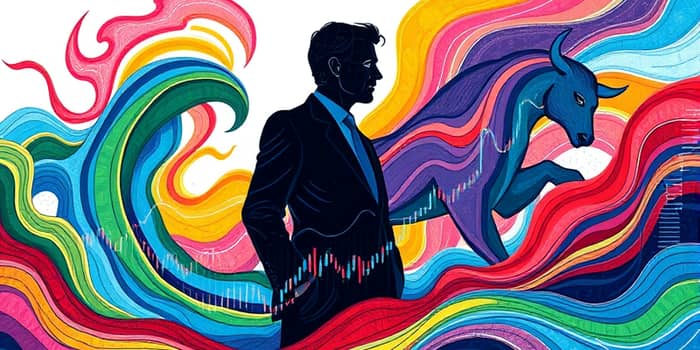
In March 2020, as headlines screamed warnings about a looming market collapse, investors faced a choice: sell in panic or seek opportunity. The sudden spike in the VIX index above 80, a striking echo of the 2008 global financial crisis, highlighted the power of collective fear and greed. Many found their decisions driven less by economic fundamentals and more by raw emotion.
Understanding what motivates individual and group behavior under stress can mean the difference between reacting impulsively and responding strategically. Investor psychology shapes market outcomes in profound ways, creating swings that defy traditional models.
Traditional theories such as the Efficient Market Hypothesis (EMH) assume that market prices fully reflect all available information and that investors act rationally. In practice, behavioral finance exposes real-world deviations. Studies show that emotional and cognitive biases often override logical analysis, leading to price anomalies and persistent inefficiencies.
By acknowledging that markets can be driven by sentiment as much as by earnings reports or GDP data, advisors and individual investors gain a more accurate framework for anticipating turbulent periods.
When volatility rises, recognizable biases can push investors toward suboptimal choices. Key tendencies include:
Recognizing these biases is the first step toward minimizing their impact on portfolio performance.
Investor sentiment, often quantified by the CBOE Volatility Index (VIX), provides a barometer of collective mood. A VIX above 30 typically signals elevated anxiety, while readings below 20 indicate complacency. During the 2008 crisis, the VIX soared above 80, mirroring the March 2020 spike.
Research confirms that extreme VIX levels correlate strongly with significant stock market moves. Rather than seeing these spikes solely as risk warnings, savvy investors can interpret them as contrarian signals, buying when fear is at its peak and selling when optimism runs unchecked.
Who responds most to market swings? Age, experience, and political identity all play a role. Gallup data reveals that 31% of investors now monitor accounts more frequently during volatility, up from 22% in 2018. Younger investors, energized by trading apps, are nearly three times more likely to buy on dips (37%) than to sell to avoid losses (13%).
Conversely, older investors—especially those over 50—tend to seek professional advice and make fewer impulsive adjustments. Political leanings also matter: Democrats often consult advisers and review positions more often, while Republicans show a higher tendency to buy during downturns.
In the era of social media and 24/7 financial news, narratives travel at lightning speed. A single tweet about bank failures or policy changes can trigger a cascade of trades. Online forums intensify herd instincts, as retail investors share rumors and confirmations in real time.
This network effect can be double-edged: while it offers rapid information flow, it also amplifies misinformation and fleeting trends, making it crucial to distinguish noise from actionable data.
Academic research provides robust insights into the mechanics of behavioral swings:
Further studies demonstrate that frequent traders, influenced by volatility spikes, often underperform less active peers over multi-year horizons.
Counteracting emotional impulses requires deliberate planning. Practical approaches include:
By embedding these tactics, investors can transform volatility from a source of stress into an opportunity for disciplined accumulation.
Regulators increasingly recognize that market stability depends on understanding human behavior. Forward-looking frameworks now recommend integrating psychological insights into risk models and product design.
Fintech firms leverage these principles to build interfaces that promote calm decision making, offering features like emotion-tracking dashboards and automated rebalancing triggers. As behavioral data becomes more accessible, institutions can tailor services that anticipate client reactions during crises.
Investor psychology is both a challenge and an asset. When understood and harnessed, emotional dynamics can guide strategic decisions rather than dictate them.
By acknowledging common biases, monitoring sentiment indicators like the VIX, and employing structured decision-making frameworks, investors and advisors can weather turbulence with confidence. In doing so, they transform market swings from unpredictable storms into calculated waves for sustainable growth.
Ultimately, mastering the human element is as vital as analyzing balance sheets. It empowers market participants to thrive in uncertainty, forging resilience that endures long after volatility subsides.
References













